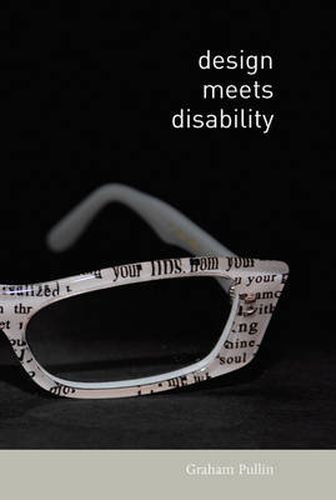Readings Newsletter
Become a Readings Member to make your shopping experience even easier.
Sign in or sign up for free!
You’re not far away from qualifying for FREE standard shipping within Australia
You’ve qualified for FREE standard shipping within Australia
The cart is loading…






Eyeglasses have been transformed from medical necessity to fashionaccessory. This revolution has come about through embracing the design culture ofthe fashion industry. Why shouldn’t design sensibilities also be applied to hearingaids, prosthetic limbs, and communication aids? In return, disability can provokeradical new directions in mainstream design. Charles and Ray Eames’s iconicfurniture was inspired by a molded plywood leg splint that they designed for injuredand disabled servicemen. Designers today could be similarly inspired by disability.In Design Meets Disability, Graham Pullin shows us how design and disability caninspire each other. In the Eameses’ work there was a healthy tension betweencut-to-the-chase problem solving and more playful explorations. Pullin offersexamples of how design can meet disability today. Why, he asks, shouldn’t hearingaids be as fashionable as eyewear? What new forms of braille signage mightproliferate if designers kept both sighted and visually impaired people in mind? Cansimple designs avoid the need for complicated accessibility features? Can suchemerging design methods as experience prototyping and criticaldesign complement clinical trials? Pullin also presents a series of interviewswith leading designers about specific disability design projects, includingstepstools for people with restricted growth, prosthetic legs (and whether they canbe both honest and beautifully designed), and text-to-speech technology with tone ofvoice. When design meets disability, the diversity of complementary, evencontradictory, approaches can enrich each field.Graham Pullin is a lecturer inInteractive Media Design at the University of Dundee. He has worked as a seniordesigner at IDEO, one of the world’s leading design consultancies, and at the BathInstitute of Medical Engineering, a prominent rehabilitation engineering center inthe United Kingdom. He has received international design awards for design fordisability and for mainstream products.
$9.00 standard shipping within Australia
FREE standard shipping within Australia for orders over $100.00
Express & International shipping calculated at checkout
Eyeglasses have been transformed from medical necessity to fashionaccessory. This revolution has come about through embracing the design culture ofthe fashion industry. Why shouldn’t design sensibilities also be applied to hearingaids, prosthetic limbs, and communication aids? In return, disability can provokeradical new directions in mainstream design. Charles and Ray Eames’s iconicfurniture was inspired by a molded plywood leg splint that they designed for injuredand disabled servicemen. Designers today could be similarly inspired by disability.In Design Meets Disability, Graham Pullin shows us how design and disability caninspire each other. In the Eameses’ work there was a healthy tension betweencut-to-the-chase problem solving and more playful explorations. Pullin offersexamples of how design can meet disability today. Why, he asks, shouldn’t hearingaids be as fashionable as eyewear? What new forms of braille signage mightproliferate if designers kept both sighted and visually impaired people in mind? Cansimple designs avoid the need for complicated accessibility features? Can suchemerging design methods as experience prototyping and criticaldesign complement clinical trials? Pullin also presents a series of interviewswith leading designers about specific disability design projects, includingstepstools for people with restricted growth, prosthetic legs (and whether they canbe both honest and beautifully designed), and text-to-speech technology with tone ofvoice. When design meets disability, the diversity of complementary, evencontradictory, approaches can enrich each field.Graham Pullin is a lecturer inInteractive Media Design at the University of Dundee. He has worked as a seniordesigner at IDEO, one of the world’s leading design consultancies, and at the BathInstitute of Medical Engineering, a prominent rehabilitation engineering center inthe United Kingdom. He has received international design awards for design fordisability and for mainstream products.